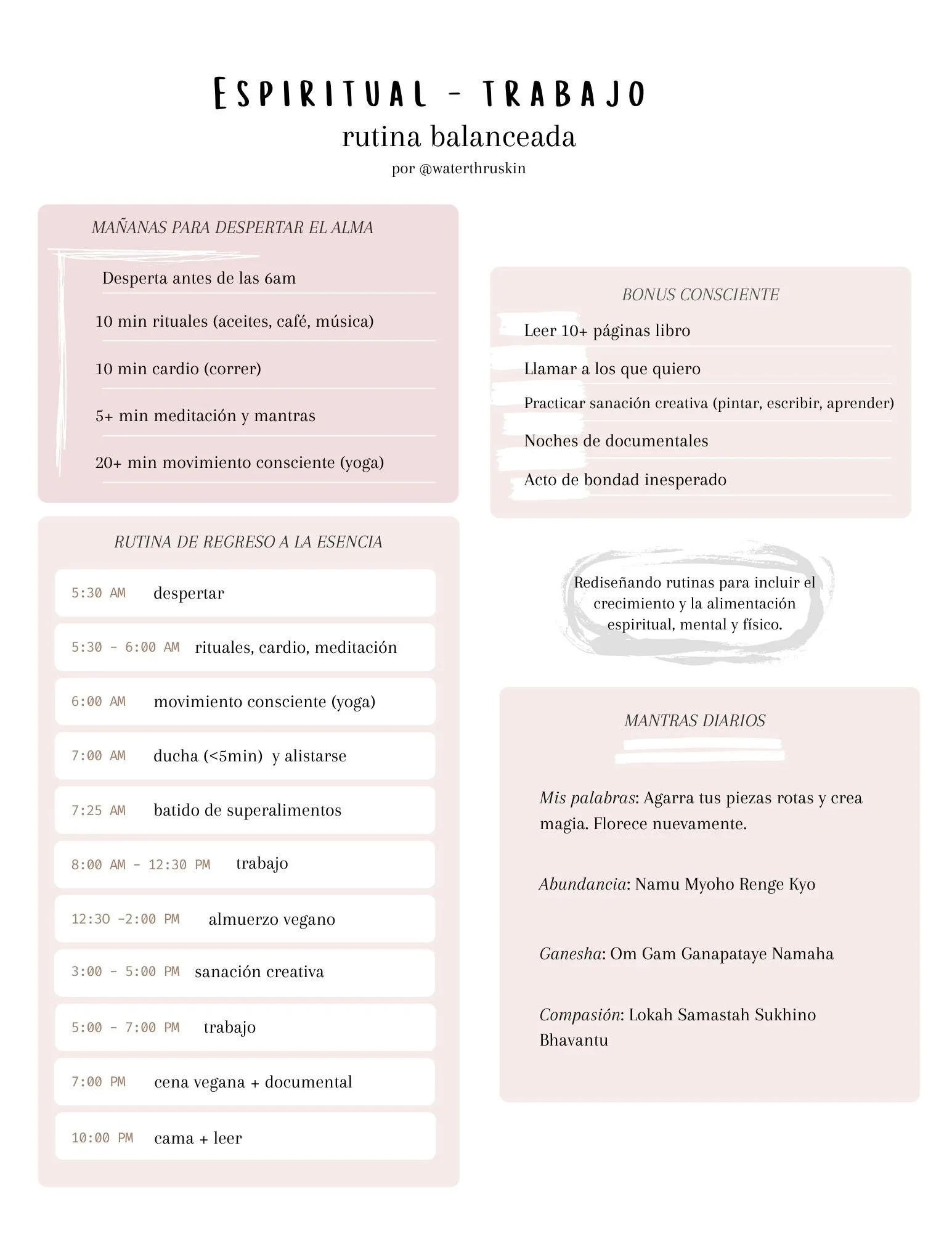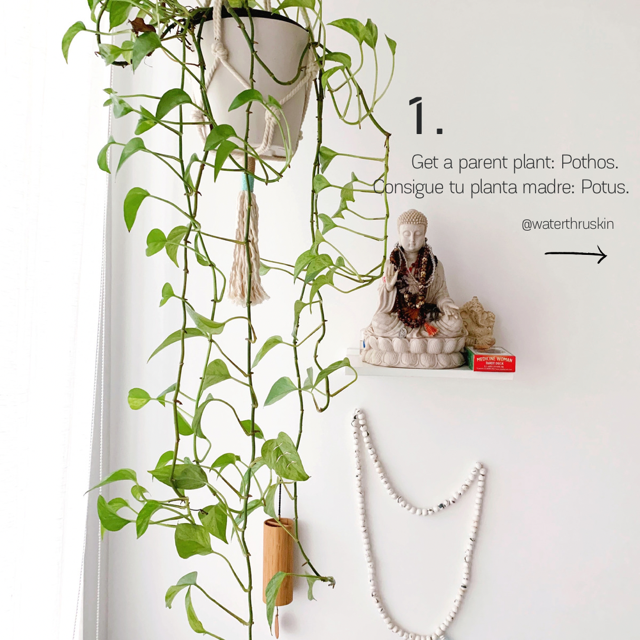Products to protect our microbiome/ Productos para proteger nuestro microbioma
If there’s something we’ve been reminded of over the past two years (or so), it’s that hygiene is very important to maintain good health. But is there such a thing as being too clean? Well, when it comes to your microbiome, using harsh chemicals and artificial ingredients can actually turn out to be bad for us.
At this point, you might be wondering: micro-what?
The microbiome is a lush-yet-invisible mix of good microbes, bacteria, and fungi that lives on our skin and in our bodies. You’ve probably heard of probiotics, for example, which are microscopic organisms that live in your stomach and contribute to breaking down your food and supporting good digestion. There are types of fungus that boost your immune system, and microbes that can help break down environmental pollutants.
Factors like stress, a high-fat/low-veggie diet, pesticides in our food, smog, and even antimicrobials, cosmetics, and the soaps we use on a daily basis can wreak havoc on our microbiome. Why?
Because stressed skin may not product enough natural oil to feed the microbiome, or produce too much so certain types of bacteria take over and clog pores (think acne). Or pollution and harsh cleanser strip all of the microbiome, allowing skin to get infected. It’s a delicate balance!
If you’ve followed my journey for a while, you’ll know how important it is for me to use products that aren’t just vegan, cruelty-free and sustainable, but also mindfully formulated with the purest ingredients. My most recent discovery is Codex, a brand that has quickly stood out in my toiletries section, taking over the soap rack thanks to its scientific approach to working with plant technology, and sustainable sourcing of ingredients.
Through studying ethnobotany and biotech innovation, Codex has created a lineup of plant-powered products that are not only good-looking, lovely-smelling, extra-foamy, and help protect our body’s unique micro-environment but their formulas are also biodegradable, meaning they won’t harm our waterways once they go down our drains.
I know what you might be thinking: Oh! Great, another earthy-looking batch of soaps. But the reality is there’s a lot of research behind each of these bars, courtesy of Dr. Barbara Paldus, the Canadian-born Ph.D. scientist from Stanford University that decided to launch this brand with data-driven results. Through lots of research, Dr. Paldus managed to gather enough information to determine which were the most efficient ingredients, including carrot and marigold extracts, shea and cocoa butter, cedarwood bark, and rosemary oil, as well as terpenes like linalool and limonene, to name a few.
I kid you not. Every time I use them I feel like walking through the herb and flower markets of Tarija, Bolivia, where I grew up. Except, most of the ingredients that Codex uses are sourced in Ireland (but they’re just as exuberant!). Each formula is patented: BiaComplex hydration, AntuComplex skin barrier protection, and PreservX food-grade preservation. But my favorite process is the controlled supply chain which oversees every step of the way, from the sustainable wild harvesting of ingredients to the sustainable packaging made with FSC carton, soy paper and biodegradable sticker!
There are many more technical things I can share about how Codex takes skincare seriously, but the best way to learn more about the brand is by experiencing it. For that, I recommend you do the same thing I did: run a hot bath, throw in a bag of the antioxidant-rich Seaweed Soak (ethically sourced in the West Coast of Ireland) and let your skin nourish its microbiome with the ingredients in your tub. And when you finish your indulging wellness session, apply a few drops of the BIA facial oil, made with organic ingredients such as rosehip, kiwi, baobab and prickly pear—extracts that will give you the glow that only those committed to healthy living appreciate and cherish. Click here to see how I did it!
Ready to give CODEX a try? If so, I got a discount code for you! Use VALERIA20 at checkout for 20% off. (Code expires March 31, 2022)
*Sponsored*
- - - - - - - - - - - - - - - - - -
(ESPAÑOL)
Si hay algo que nos han recordado en los últimos dos años (más o menos), es que la higiene es muy importante para mantener una buena salud. Pero, ¿existe tal cosa como ser demasiado limpia? Bueno, cuando se trata de nuestro microbioma, el uso de productos químicos agresivos e ingredientes artificiales puede resultar perjudicial para nosotros.
En este punto, se estarán preguntando: ¿micro-qué?
El microbioma es una mezcla exuberante pero invisible de buenos microbios, bacterias y hongos que vive en nuestra piel y en nuestro cuerpo. Probablemente hayan oído hablar de los probióticos, por ejemplo, que son organismos microscópicos que viven en el estómago y contribuyen a descomponer los alimentos y favorecen una buena digestión. Hay tipos de hongos que estimulan nuestro sistema inmunológico y microbios que pueden ayudar a descomponer los contaminantes ambientales.
Factores como el estrés, una dieta alta en grasas y baja en vegetales, pesticidas en nuestros alimentos, smog e incluso antimicrobianos, cosméticos y los jabones que usamos a diario pueden causar estragos en nuestro microbioma. ¿Por qué?
Porque la piel estresada puede no producir suficiente aceite natural para alimentar el microbioma, o producir demasiado, por lo que ciertos tipos de bacterias toman el control y obstruyen los poros (piensen en el acné). O la contaminación y los limpiadores agresivos eliminan todo el microbioma, lo que permite que la piel se infecte. ¡Es un equilibrio delicado!
Si han seguido mi camino por un tiempo, sabrán lo importante que es para mí usar productos que no solo sean veganos, libres de crueldad animal y sostenibles, sino que también estén formulados conscientemente con los ingredientes más puros. Mi descubrimiento más reciente es Codex, una marca que se ha destacado rápidamente en mi sección de artículos de belleza e higiene, apoderándose de la jabonera gracias a su enfoque científico trabajando con tecnología vegetal y el abastecimiento sostenible de ingredientes.
A través del estudio de la etnobotánica y la innovación biotecnológica, Codex ha creado una línea de productos a base de plantas que no solo son estéticamente hermosos, huelen delicioso, son extraespumosos y ayudan a proteger el microambiente único de nuestro cuerpo, sino que sus fórmulas también son biodegradables, lo que significa no dañarán nuestras vías fluviales una vez que bajen por nuestros desagües.
Sé lo que podrían estar pensando: ¡Ay! Genial, otro jabón sustentable! Pero la realidad es que hay mucha investigación detrás de cada una de estas barras, cortesía de la Dra. Barbara Paldus, Ph.D. nacida en Canadá. científica de la Universidad de Stanford que decidió lanzar esta marca con resultados basados en datos. A través de mucha investigación, la Dr. Paldus logró recopilar suficiente información para determinar cuáles eran los ingredientes más eficientes, incluidos extractos de zanahoria y caléndula, manteca de karité y cacao, corteza de cedro y aceite de romero, así como terpenos como linalool y limoneno, para nombrar unos pocos.
Honestamente, cada vez que los uso tengo ganas de caminar por los mercados de hierbas y flores de Tarija, Bolivia, donde crecí. Excepto que la mayoría de los ingredientes que usa Codex provienen de Irlanda (¡pero son igual de exuberantes!). Cada fórmula está patentada: hidratación BiaComplex, protección de la barrera de la piel AntuComplex y conservación de grado alimenticio PreservX. Pero mi proceso favorito es la cadena de suministro controlada que supervisa cada paso del camino- desde la recolección sostenible de ingredientes silvestres hasta el empaque ecológico hecho con cartón FSC, papel de soya y adhesivo biodegradable.
Hay muchas cosas técnicas que puedo compartir sobre cómo Codex se toma en serio el cuidado de la piel, pero la mejor manera de aprender más sobre la marca es experimentándola. Para eso, te recomiendo que hagas lo mismo que hice yo: prepara un baño caliente, agrega una bolsa de Seaweed Soak rico en antioxidantes (de origen ético en la costa oeste de Irlanda) y deja que tu piel nutra su microbioma con los ingredientes en tu bañera. Y cuando termines tu placentera sesión de bienestar, aplica unas gotas del aceite facial BIA, elaborado con ingredientes orgánicos como rosa mosqueta, kiwi, baobab y tuna, extractos que te darán el brillo que solo aquellos comprometidos con una vida saludable aprecian y valorar. Haz clic aquí para ver como lo hice.
¿Listxs para probar CODEX? Si es así, ¡tengo un código de descuento para ustedes! Usen VALERIA20 al finalizar la compra para obtener un 20 % de descuento. (El código vence el 31 de marzo de 2022)























































